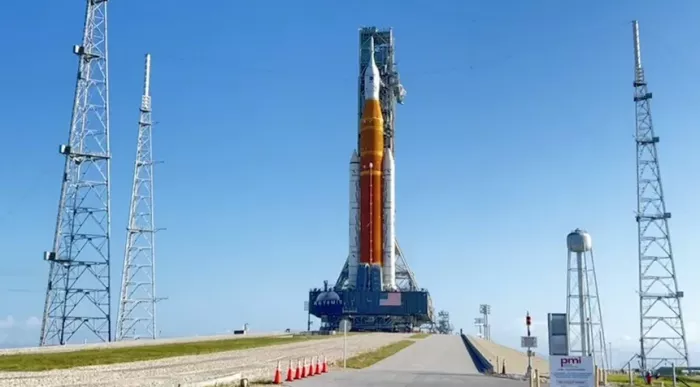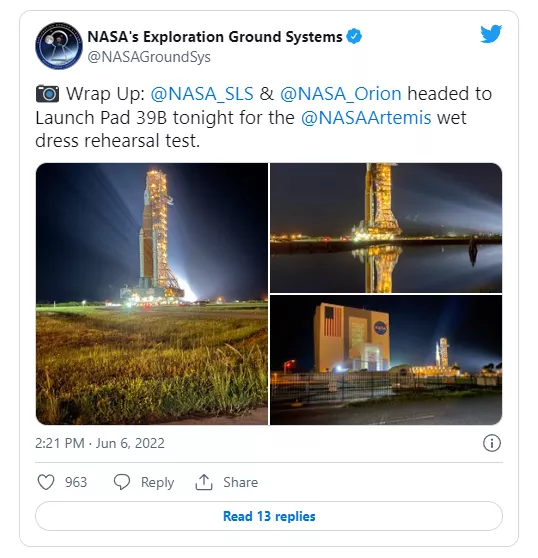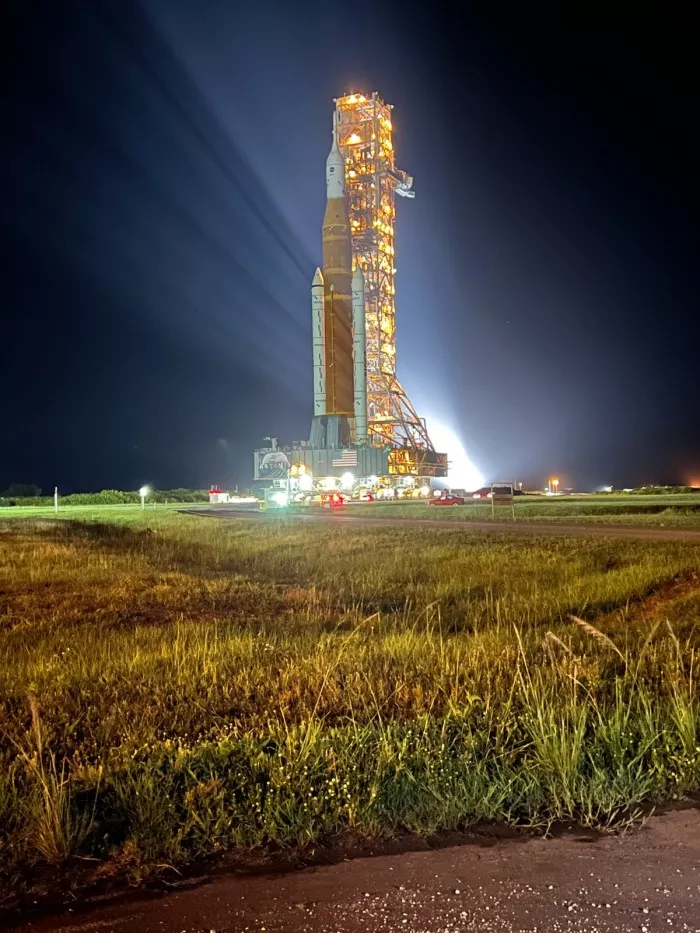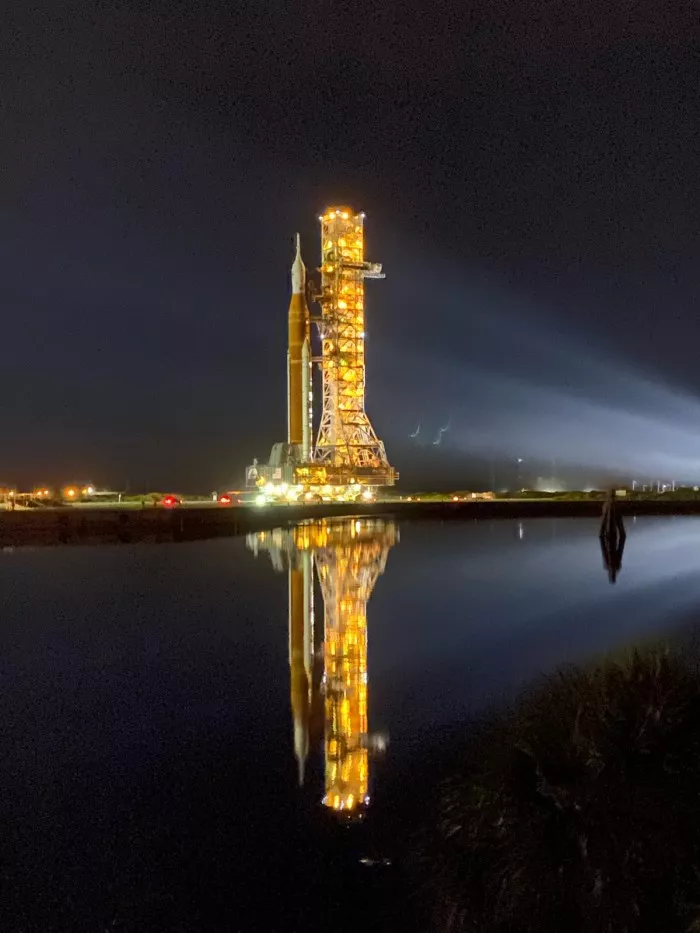According to CNET, Monday night was a long night for NASA's ground system exploration team at Kennedy Space Center in Florida Working in the dark, the staff slowly moved the Artemis I "giant lunar rocket" from its indoor assembly building to the launch pad of launch site 39B, preparing for the second key "wet rehearsal" test

NASA's Artemis program focuses on putting a woman and a colored astronaut on the lunar surface, while building a sustainable human base in our lunar neighborhood. Before people can take Orion spacecraft -- launched by the giant lunar rocket of the giant space launch system (SLS) -- NASA needs to prove all its work by sending Orion to carry out the inorganic crew's journey around the moon. This is the Artemis I task.
Before the takeoff of Artemis I, SLS needs to pass some tests, especially the "wet rehearsal", which includes loading propellant into the rocket and going through all launch steps, but no actual launch. NASA tried to conduct the test in April, but technical problems hindered its success. Therefore, the organization brought the SLS back, repaired it and tried again.
It is not easy to transport a rocket system taller than the statue of liberty. It took the team 8 hours to transport the SLS back to the launch pad, and it arrived there at about 5:20 a.m. Pacific time on Monday. The detection ground system team shared some lovely journey photos. Getting the SLS into the right position is just the beginning.

"The team will work hard to fix the space launch system rocket, Orion spacecraft and mobile launchers on the ground support equipment of the launch pad, and ensure that the rocket is in a safe configuration to prepare for the upcoming fuel tank test," NASA said in a statement on Monday.



The agency said it would take about two weeks of preparation before the "wet rehearsal". If all goes well, the actual Artemis I launch may take place within a few months, although NASA has set a possible launch date until 2023.